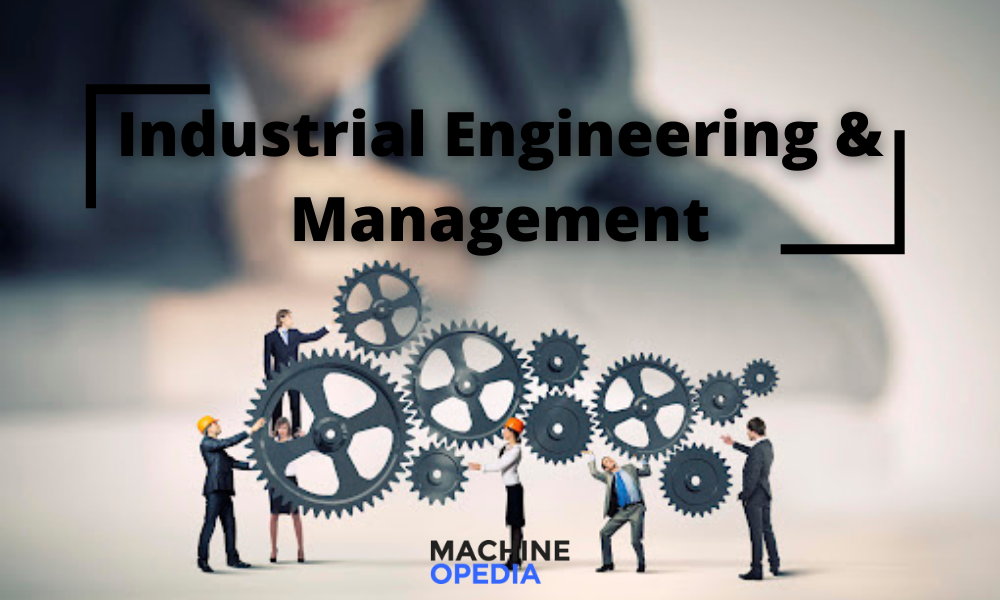
Industrial engineering and management have seen exceptional growth ever since machines have taken over manufacturing applications. Modern engineering methods today thrive on 3D prototypes and CNC machining equipment that has been a driving force when it comes to the manufacturing and development of the latest designs. One of the key advancements on the industrial front has been the involvement of artificial intelligence that has been widely used in the problem-solving department by different industries aerospace, automobiles, and machinery. The engineering methods have also evolved over time and have provided the manufacturers easy ways to deal with complex manufacturing problems that were impossible to solve in the past.
The industrial requirements and production methods have been changed to the extent that the demand for a new approach has been erupting for a long time. There are different complex methods and procedures that have been put in place by the organizations to overcome the management needs and problem-solving matters. The use of automated means has somehow solved several time-related issues, but the need for human involvement in the management department is still needed. There’s still a need for professional staff to take care of the operational duties so they can use the potential that each machinery provides in a certain environment.
The use of state-of-the-art methods such as robots has made large-scale manufacturing and designing relatively easy as today there can be multiple approaches that could be considered in order to solve an industrial problem. Engineers have been trained by organizations to interact with the machines in an effective way and understand the versatile functions and modes to perform the time-consuming tasks in a matter of seconds. It could be said without any doubt that management of large manufacturing facilities and supply chains wouldn’t have been imaginable if it wasn’t for self-driven robots and carts that we see today in some of the biggest warehouses around the world.
The management of different industries has taken a huge shift due to the induction of modern technology in their setup. The automobile industry, for instance, relies on robots and mechanical solutions that are beneficial for the manufacturers to help them in providing timely deliveries and precision. Putting together different parts and performing electric applications in a manufacturing facility was never this easy as it is nowadays, all thanks to the modern means of technology that has helped the manufacturers to achieve new heights.
The booming technology has allowed the operators of different old machinery to rely on power-saving features of the latest machines providing efficient and reliable results. The transportation of equipment has also made a considerable improvement allowing the manufacturers to rely on different automobile solutions to move around a manufacturing setup and heavy-duty transport machinery. There have been different developments in terms of the usage of unnamed vehicles as well that are designed to have self-driving capabilities. The technology has also helped to take groundbreaking measures for the aerospace and military equipment industry as well. The use of drones and other unmanned vehicles has been a paradigm of excellence that has been achieved through modern robotics and design by professional engineers.
When we talk about industrial engineering, there are many things that might come to mind. Industrial engineering has been evolving year by year, bringing us the marvels of technology that have changed the course of humanity. There are countless examples that can pop up in your mind when you look around and see how technology and industrial engineering have changed the way we look at the world around us.
The prime example of this fact can be the automobile industry, as it changed the way we look at transportations today. The evolving automobile industry hasn’t stopped with our eyes set on an all-electric future. The vehicles have become safer, more reliable, and have been providing us speeds that were hard to imagine two decades ago.
When we speak of the automobile industry, the scale is far greater than ever before. The automobile industry alone is the beneficiary of different lighting technologies, modern machining parts, and techniques that make it as efficient as any other industry today.
Out of many examples of industrial engineering are the lighting systems that we see around us. Years ago, it was just a dream to have a lighting bulb, and now we have bulbs that are so compact that they can be fitted anywhere you want them to be used. The LEDs have changed the way we think about the lighting setups around us, and it has had a massive impact on industries as well. Today, the manufacturing of LED lights has doubled up due to the increase in demand in various industries. You can have traces of different types of LED lights in your electronic appliances such as the televisions and even the car that you drive.
It might come as a surprise to many people, but the car that you drive every day also features a wide range of LEDs that power up your backlight, headlight, and even the lights that you see in your speedometers. Manufacturers use small-sized LED lights to provide immense power to your headlights which are more than enough for a person to see in the dark.
The televisions that are manufactured today rely heavily on different smaller LEDs that help them to provide the vision to the viewer. The use of LEDs has been proven to be easy on the eyes and has allowed the manufacturers to ditch the blue light that is harmful to the human eye. There have been many global manufacturers that have shifted from older technology to the use of LEDs to improve the picture quality of their televisions.
When we talk about different versions of LEDs, then one thing that cannot be denied is the use of large-scale floodlights that are commonly used in lighting up large spaces such as sports arenas and, in many cases, are also used in domestic applications. The demand for LEDs has been exponentially high due to the massive use of these in various electronic appliances.
It can be said that the advancements made have made LEDs the center of attention for many industries, including the ones that target domestic users. The diverse usage of LED floodlights has not only made the manufacturers consider large-scale production but the prices for various floodlights have also decreased, encouraging the adaption of floodlights in commercial and domestic applications. The LED market has been thriving on increasing public demand, and it’s a notable fact that the use of floodlights is not limited to the commercial sector but has also taken domestic users by storm as well.
There are manufacturers that offer a wide variety of options and have drastically cut down the overall cost to make the floodlights not only user-friendly but to bring them into the mainstream user spectrum. You can find a wide array of products that offer a variety of functions that you can use for various purposes. The floodlights have been seen as a multipurpose tool in the consumer market, and people are keen to get their hands on the floodlights due to the light coverage that they provide while saving up on power consumption. The manufacturing sector has been determined to provide different choices in the floodlight category so the users can get the lights that they think would fit the best for their required application. If you are searching for different designs, then you can contact a reliable selling source that can present you with different variety of floodlights and other lighting products.
The ongoing advancements have had a greater impact on the medical industry, and we have seen the evidence in the form of CT scans and X-ray machines. Industrial advancements have helped the medical industry to solve years-old health-related issues with the help of automated machines, and 3D mapped models of the human body. The use of different lighting solutions has made it possible to examine the cases from a broader perspective and find solutions that were not possible before the technological advancements were made.
The versatility that has been seen in terms of machinery used in different applications is phenomenal. The manufacturing methods have taken a turn due to the number of options that various machines provide to many manufacturers. There are certain industries that rely on custom machining tools and trained professionals to make sure that they can achieve the required amount of precision in an application. If we talk about the medical industry, then it’s a notable fact that different scanning machines and operating apparatus have made it easy to make instant diagnostics of diseases that were thought to be incurable.
If we talk about aerospace, then it’s known about the development of different spacecraft and satellites. The machinery used in these applications has been designed to operate at relatively higher speeds increasing productivity and improving the final results. The automated means of manufacturing have allowed the producers to reduce the operational costs yet get the desired results at a given time frame. The machines that have been designed for large-scale usage are not energy efficient but are smart enough to understand the surroundings and the required outcome that is expected of them.
For instance, the machines that are used to produce LED lights on a larger scale are programmed to meet the different sizes and design-related requirements. The need for different LED lights for each application has allowed the manufacturers to rely on the latest technology so they can offer unique design characteristics that are easy to manage, operate and provide longer lifespans.
Management of different advanced machinery requires exceptional grip on the basics of modern machinery. There are companies that have hired a professional workforce that can offer services such as operational duties and repair works on the machinery that works on different complex mechanisms. The tools that are utilized in the process are specially designed and crafted to fit the desired requirement that might be needed to overcome different machining crises.
